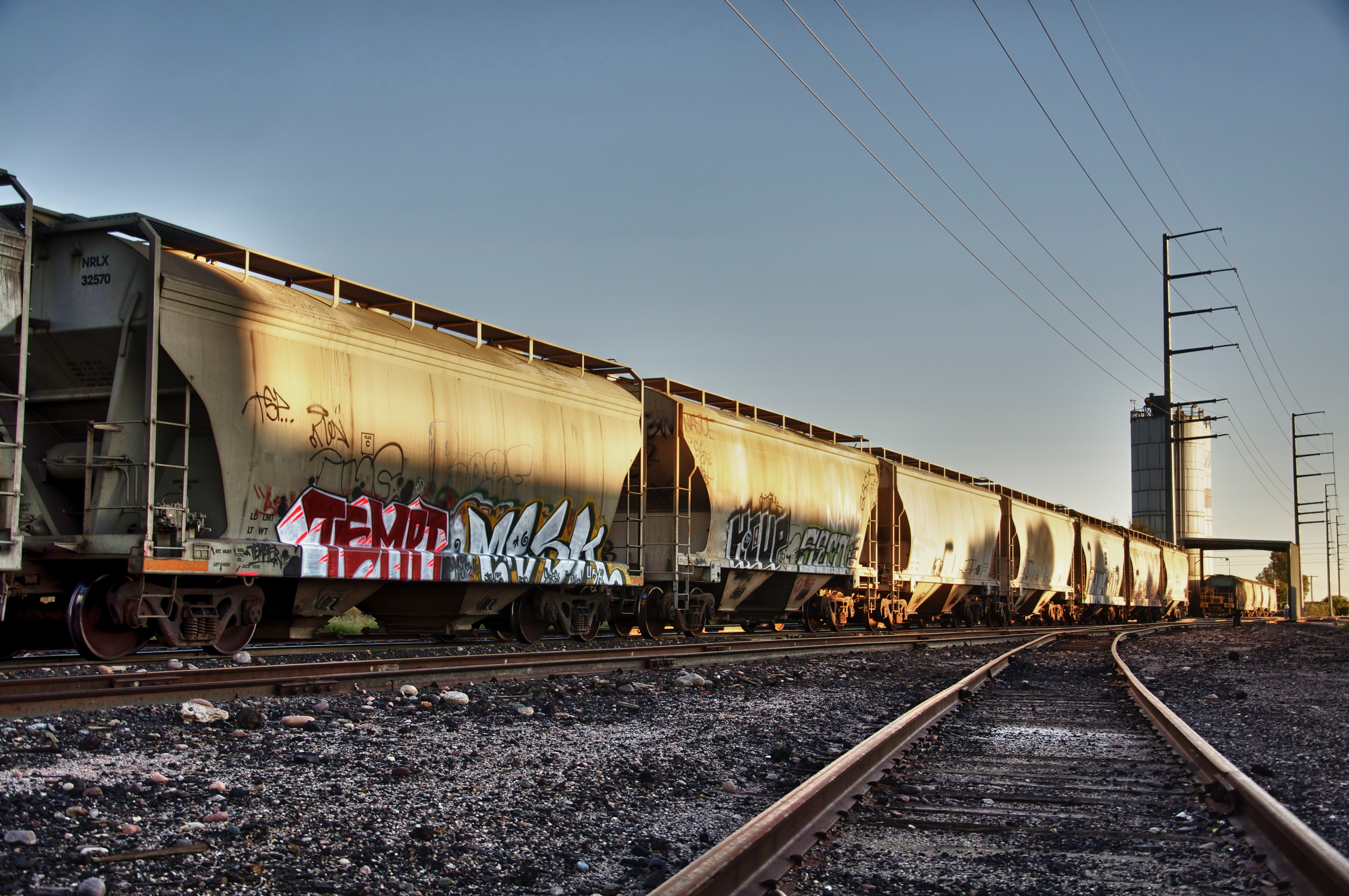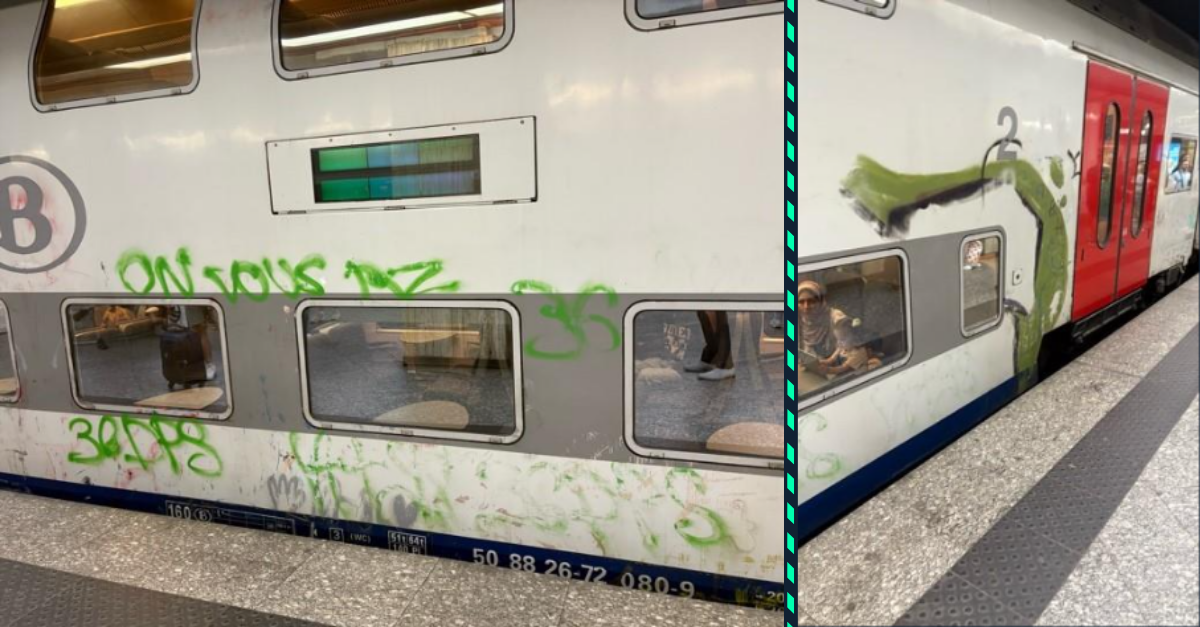
When Graffiti Reveals Critical Security Vulnerabilities in Rail Infrastructure
Written by Watchtower director Wouter Ommeslag
A few days ago, I found myself at Brussels Central Station, waiting for my train like thousands of other passengers do every day. As the train pulled into the station, something immediately caught my attention that made me stop and think not as a passenger, but as a security professional.
The train was covered in graffiti. Every single wagon bore the colorful marks of nighttime visitors who had clearly spent considerable time and effort decorating the exterior of what should be a secure piece of critical infrastructure.

Beyond Vandalism: A Security Wake-Up Call
While many might see this simply as an act of vandalism or urban art, my immediate thought was far more concerning: if unauthorized individuals can access train depots at night with enough time and freedom to cover entire wagons with graffiti, what else could they accomplish during those unsupervised hours?
The same access that allows for extensive graffiti operations could enable far more serious threats:
Sabotage of critical train systems and components
Placement of explosive devices or other dangerous materials
Tampering with safety systems that protect thousands of daily passengers
Theft of valuable components or sensitive operational information
Creating vulnerabilities that could be exploited for terrorist activities
The graffiti, in essence, serves as a visible indicator of a much larger security gap in our rail infrastructure. Each colorful tag represents hours of undetected presence in what should be a highly secure environment.
In Duisburg, Germany, incidents have occurred where individuals deliberately set fire to critical rail infrastructure, including substations and cables along train tracks. In France activists sabotaged railroad infrastructure before the opening of the 2024 Olympic Games. These attacks demonstrate that the same unauthorized access that enables graffiti can escalate to devastating acts of sabotage that paralyze entire transportation networks and endanger public safety.
The Real Cost of Inadequate Perimeter Security
For NMBS (Belgian National Railway Company) rail operators worldwide, this isn't just about the cost of cleaning graffiti or repainting trains. It's about the fundamental security of transportation infrastructure that millions of people depend on daily. The economic impact of a serious security incident could be catastrophic, not to mention the potential loss of life.
The financial burden of graffiti vandalism alone tells a compelling story. In 2020, NMBS spent €6.15 millions removing graffiti from trains—an increase of €800,000 from the previous year. This represents a disturbing upward trend: costs rose from €4.2 million in 2018 to €5.34 million in 2019, and then to €6.15 million in 2020. When combined with an additional €1.12 million spent on repairing other acts of vandalism, the total annual cost exceeded €7.27 million.
But the financial impact extends beyond direct cleaning costs. As SNCB spokesperson Bart Crols explained, "those trains cannot be used for passenger transport" while graffiti removal is underway. Each vandalized train represents lost revenue, service disruptions, and passenger inconvenience—costs that multiply across the entire network when security failures are systematic.
This escalating expense pattern demonstrates how inadequate security becomes increasingly costly over time. The €1.95 million increase in graffiti removal costs over just three years could have funded significant security infrastructure upgrades. Instead, it represents recurring operational expenses with no lasting benefit—money spent repeatedly on the same preventable problem.
Traditional security measures—such as fencing, occasional patrols, and basic alarm systems—are clearly insufficient against determined intruders who can spend entire nights in depot areas undetected.
The Watchtower Solution: AI-Powered Perimeter Security
At Watchtower Security Solutions, we've developed precisely the technology needed to address these critical vulnerabilities. Our AI-powered security towers and boxes provide comprehensive, intelligent monitoring that transforms how rail depots and other critical infrastructure are protected.
Key capabilities include:
Advanced AI Detection: Our systems use sophisticated computer vision to instantly detect human presence, distinguishing between authorized personnel and potential intruders
Immediate Response: Integrated speaker systems allow control room operators to issue real-time warnings to intruders, often deterring them before any damage occurs
24/7 Monitoring: Alerts can be monitored through a partner-control room or the NMBS/SNCB own control room
Rapid Response: When threats are detected ny your systems, the control room can immediately alert rail security teams and police, ensuring swift intervention